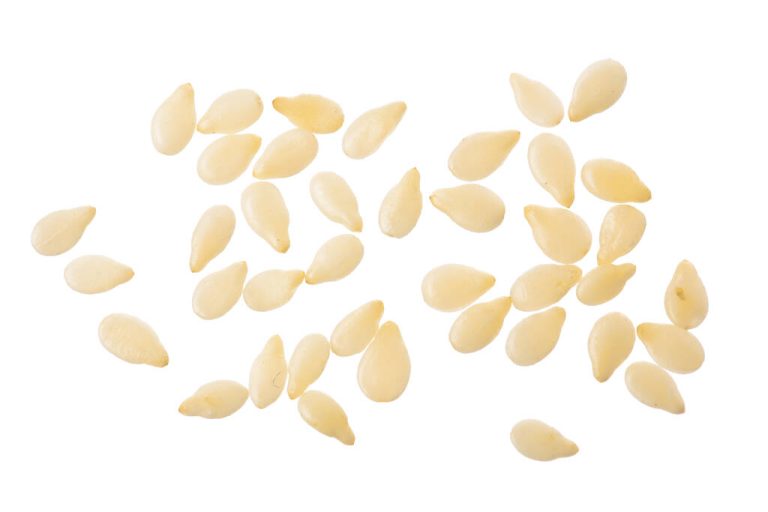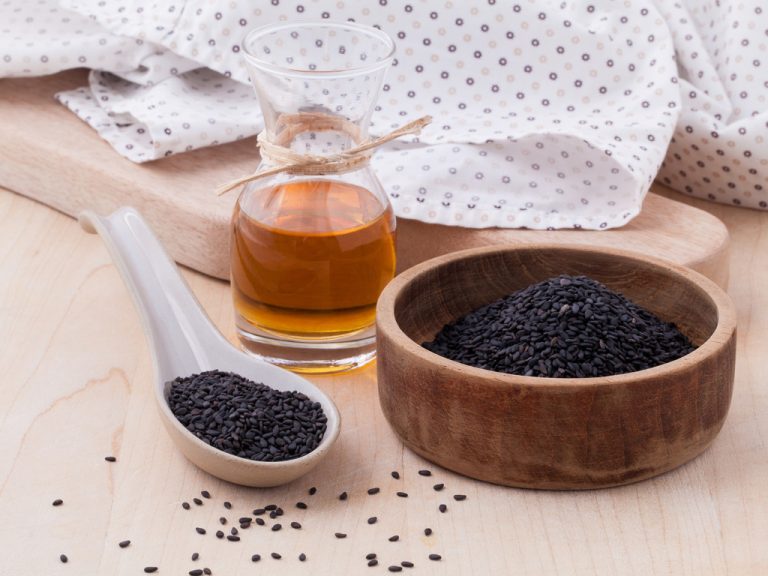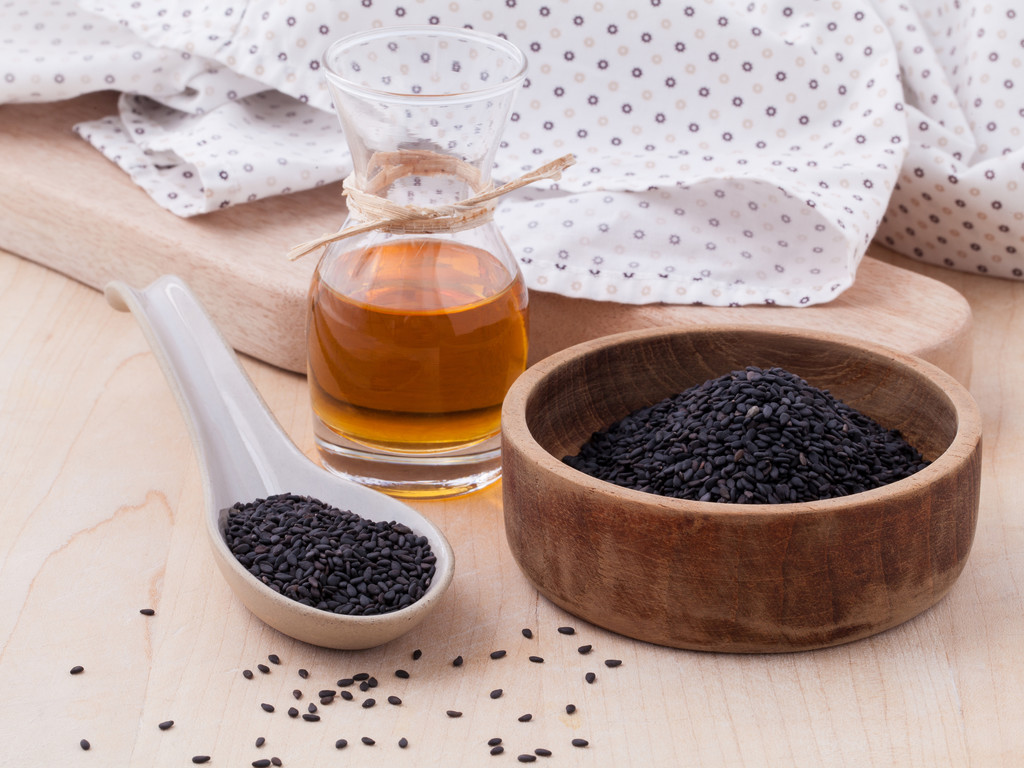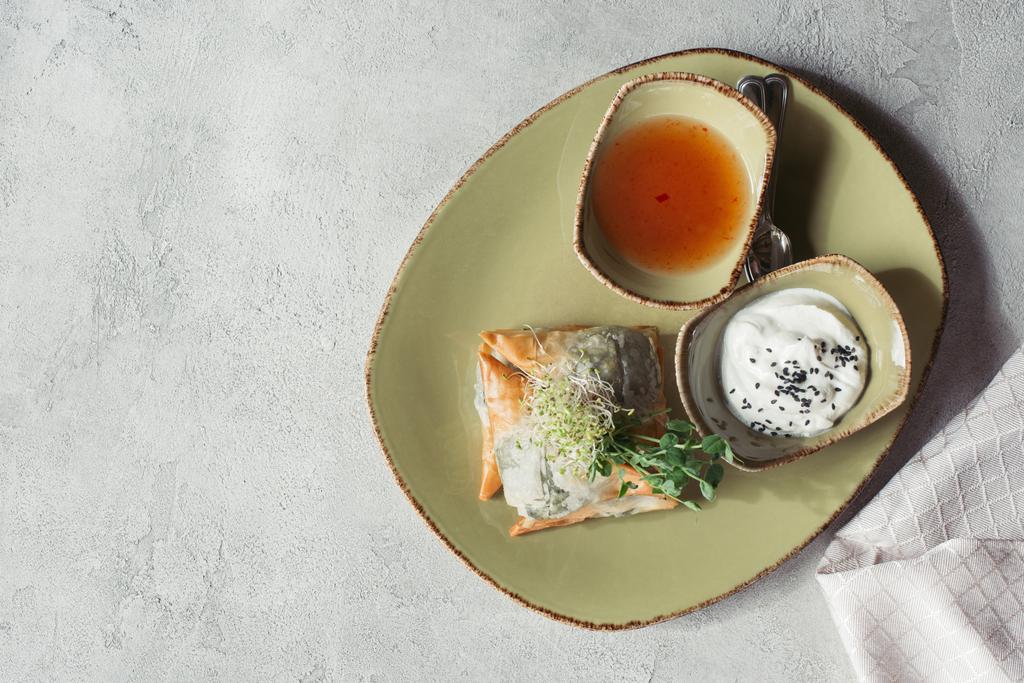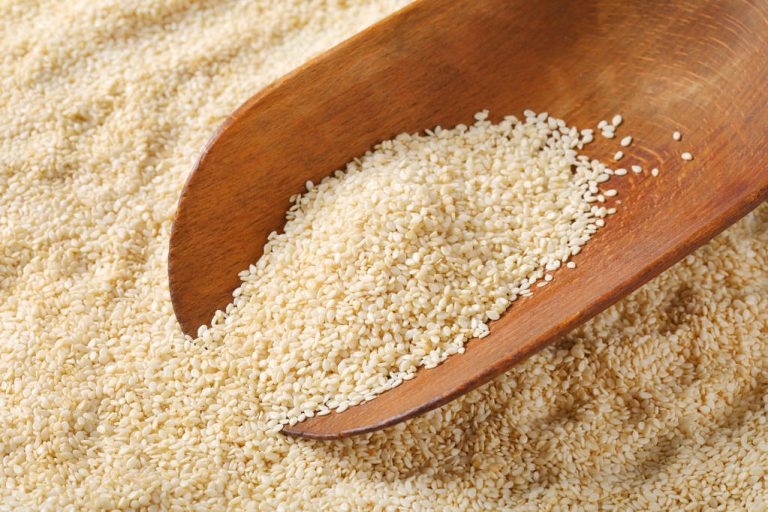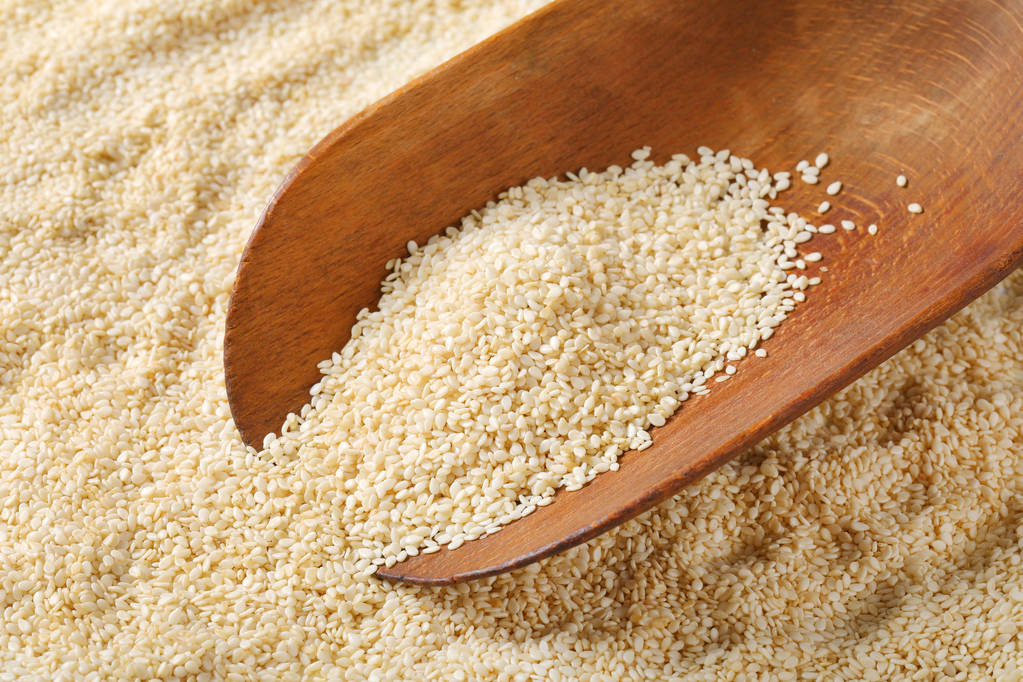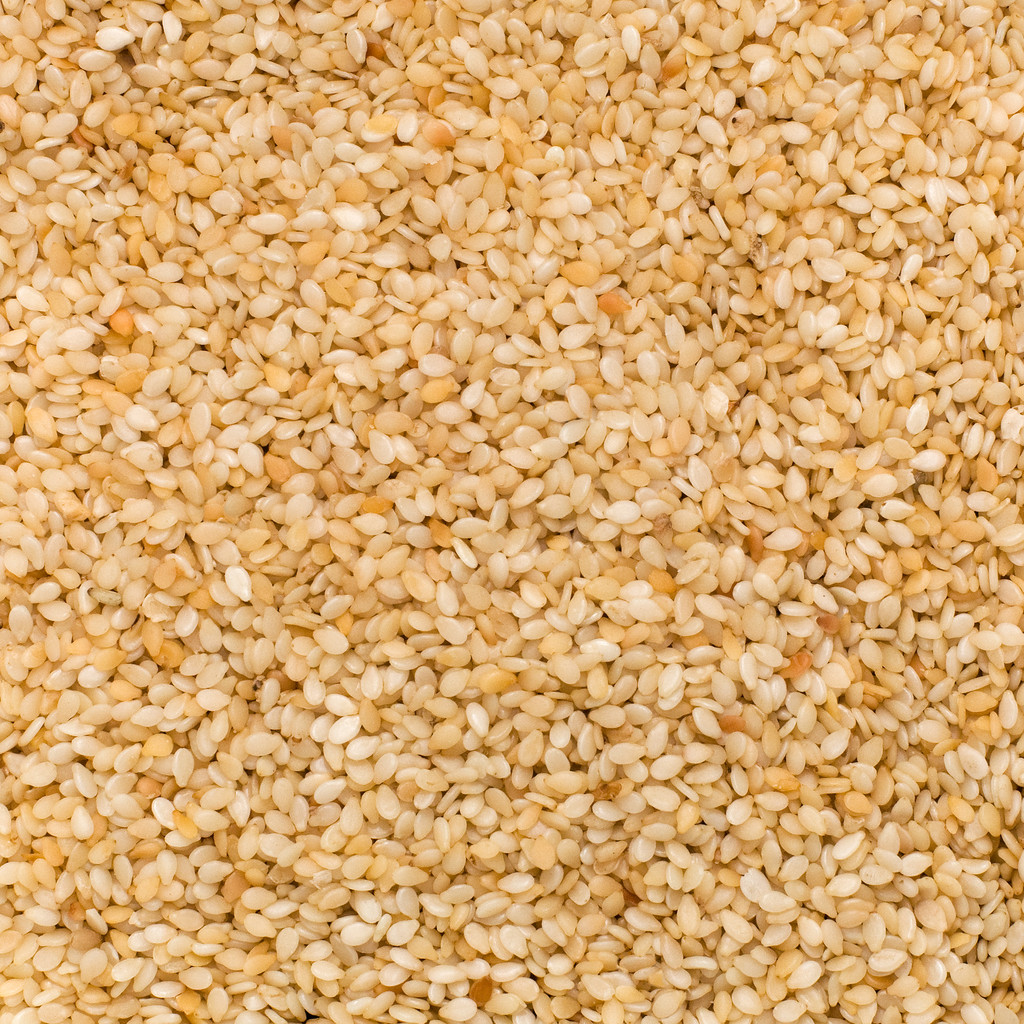Sesame oil has been used for thousands of years in Asian countries as a food and for body care. We explain to you what makes the oil so healthy and how it affects skin and hair.

What makes sesame oil so healthy?
Sesame oil is considered the oldest cooking oil in the world. For thousands of years it has been a popular food, especially in China, India and Japan, and it is hard to imagine Asian cuisine without it. When sesame oil also became popular in India, it quickly became an essential part of Ayurveda. In Ayurvedic medicine, it has also established itself for external use.
Sesame oil is considered a very healthy source of fat, as it consists of around 87% unsaturated fatty acids. It has a particularly high proportion of unsaturated linoleic acid, an omega-6 fatty acid. This has a positive effect on cholesterol levels, strengthens heart activity and blood clotting and can prevent osteoporosis and hardening of the arteries.
Other health benefits of the oil result from the content of antioxidants, which are said to have a cancer-preventing effect, as well as the proportion of lecithin and vitamin E.
sesame oil in the kitchen
Depending on how the oil is produced, it is available in different variants:
Cold-pressed and virgin sesame oil has not been heated. As a result, it has a particularly high proportion of valuable and health-promoting ingredients.
With the refined oil, the seeds were previously heated, which means that many of the ingredients are lost. However, heating it also makes it last longer. It is also tasteless and can be used for many dishes.
Sesame oil is also available as light and dark oil. The color of the oil depends on how the seeds were treated before it was made:
The light sesame oil was pressed from the untreated sesame seeds. It has a neutral and mild taste and is particularly suitable for cooking, baking and roasting. For example, if you want to make tahini yourself, you can also use sesame oil.
The dark oil is obtained from roasted sesame. It has a very intense and nutty taste and should therefore be used sparingly. In its raw state, it is often drizzled over a dish at the end to give it an Asian character. This oil is also recommended for the preparation of salad dressings.
Due to the antioxidant content, sesame oil has a very long shelf life and is relatively resistant to light and heat. Nevertheless, you should preferably store it in a cool and dark place. Then it can be stored for up to a year.

Sesame oil as body care
Sesame oil is particularly important in Ayurveda and is used both in the kitchen and for skin care. In massages, it is used as a natural massage oil and is considered a particularly suitable agent for morning oil pulling.
For body care you should use the light and cold-pressed sesame oil. The content of linoleic acid, antioxidants and vitamins makes it a proven remedy for dry and stressed skin. The oil penetrates deep and quickly into the skin and provides it with optimal moisture. It also helps in skin regeneration and strengthens skin cells.
The healthy oil also has the same effect on your hair. You can use it as a nourishing hair treatment especially for very dry and stressed hair or a sensitive scalp:
Simply put the oil in your hair before washing and massage it well into the scalp and hair ends.
Leave it on for at least two hours or overnight.
Rinse gently with lukewarm water and wash your hair with a mild shampoo.
If you struggle with brittle ends in particular or if your hair is difficult to comb through after washing, you can simply massage a few drops of the oil into the hair lengths after washing. This will also give your hair a natural shine.

